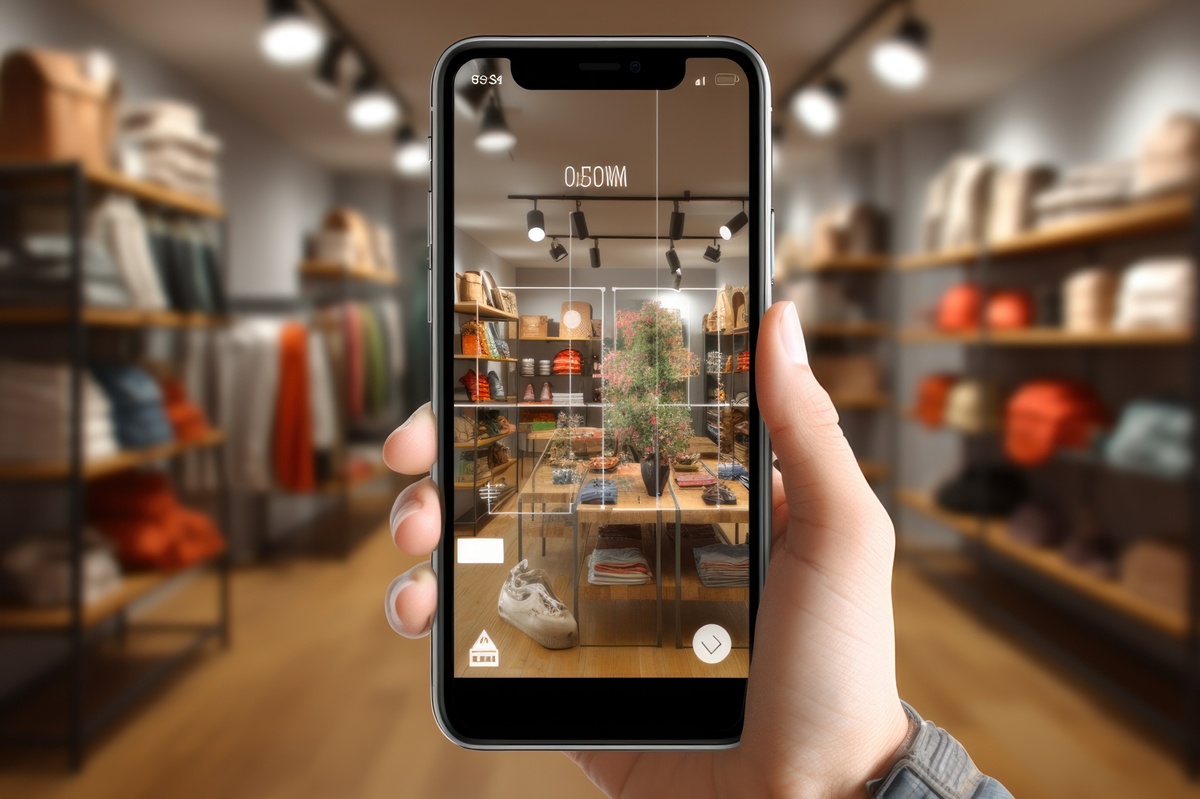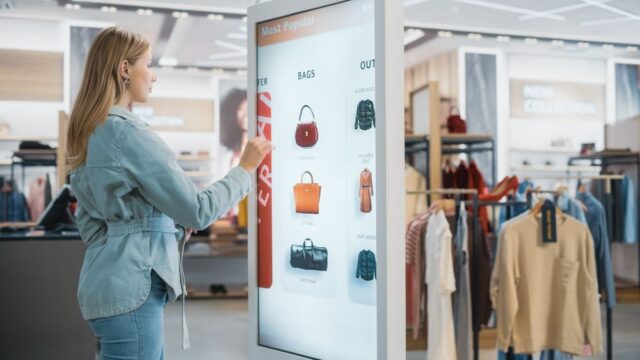April 08, 2025
From aisles to algorithms: the evolution of in-store retail

Modern retail is at a pivotal juncture, balancing technological innovation and human interaction. “Never mind how much retail tech you use, that’s all very nice, but one-on-one will never go away,” Silvia Coleman, VP of thought leadership at CXG, told Customer Experience Magazine.
The key challenge is leveraging artificial intelligence(AI), augmented reality (AR), and other technologies to strengthen, rather than replace, genuine human connections that foster loyalty and customer satisfaction.
Bridging the digital divide: human touch in a tech driven world
Despite the surge in online shopping, the allure of physical stores remains strong. Data from Visa Consulting & Analytics (VCA) estimates that in-store shopping accounts for 77% of total payment volume during the holiday season.
Retailers recognise that the in-store experience offers an opportunity to create immersive, personalised, and memorable encounters that cannot be replicated online. This is not about adding technology for its own sake but strategically integrating it to amplify the human component, streamline operations, and create a seamless omnichannel journey.
As Murat Hoke, customer experience assistant general manager at LC Waikiki, a Turkish multinational fashion retailer, explained: “LC Waikiki creates brand loyalty in its physical stores by offering visual, tactile, and auditory experiences to customers.”
LC Waikiki’s physical stores are designed to offer multi-sensory experiences that go beyond browsing. From visually striking displays to carefully curated product layouts and even the ambient soundtrack, they reflect the brand’s identity.
The blended approach acknowledges that while digital platforms offer convenience, the tangible experience of a physical store builds deeper, lasting relationships.
AI as the architect: personalising retail at scale
Technology is playing a pivotal role in transforming in-store experiences. According to Brad Jashinsky, director analyst in Gartner marketing practice, “employee app platforms or super apps” enable brands to streamline operations and empower staff.
Retail brands powered by mobile, IoT, edge computing, and AI provide real-time data and insights, enabling employees to deliver personalised and efficient service. Imagine a sales assistant equipped with a tablet instantly accessing a customer’s purchase history and preferences, offering tailored recommendations, and facilitating a seamless checkout process.
“AI can just sift through all of this data, whether it’s structured or unstructured on trends,” said Coleman. “It can take personal shopping preferences that a brand probably already has access to and embed it to discover ways how it can best personalise products or experiences.”
This capability allows luxury brands to curate highly personalised experiences, catering to the desires of their discerning clientele.
“Generative AI will enable luxury retailers to create bespoke customer experiences by analysing purchasing patterns, style preferences, and lifestyle data,” added Coleman.
Data driven personalisation and genAI’s role
Data analytics revolutionises in-store operations, enabling retailers to tailor experiences to individual preferences. LC Waikiki uses AI-supported systems to analyse customer feedback on everything from website optimisation to staff training, commented Hoke.
Retailers are increasingly adopting AI for customer-facing and operational efficiencies, with deployments including fraud detection, customer behaviour understanding, and demand forecasting.
“Gen AI assistants for employees provide a natural language interface for store associates and store managers to aid in the process of scheduling store associates, tracking skills, performance and personalised training programs,” said Jashinsky.
The omnichannel imperative: seamless journeys
The lines between online and offline retail are blurring, and consumers expect a seamless omnichannel experience. According to a recent survey, consumers increasingly expect AI to enhance shopping by simplifying product discovery, improving efficiency, and streamlining decision-making.
“The number one omnichannel shopping behaviour for US consumers is checking online if an item is available in-store,” commented Jashinsky. “This necessitates real time and accurate inventory systems.”
Consumers often use this information to decide whether to visit the store and purchase the product immediately or to place an online order for home delivery.
The seamless integration between digital and physical shopping is reshaping retail, as businesses must synchronise their inventory across all channels to meet customer expectations.
Crafting immersive in-store encounters
Augmented and virtual reality also transform the in-store experience, creating immersive and interactive environments. Luxury brands are leveraging these technologies to create ‘phygital experiences,’ such as virtual fitting rooms and AI-driven make-up applications, explained Coleman.
“Galeries Lafayette has used AR to create immersive holiday interiors, while Dior has integrated AR to offer virtual fitting rooms. Canada Goose takes it further with VR cold room simulations, allowing customers to experience the extreme environments their products are designed for, ” added Coleman.
Imagine a customer trying on virtual jewellery or visualising high-end furniture in their home through an AR app—this not only enhances decision-making but also creates a memorable shopping experience.
“By 2029, up to 30% of tier 1 retailers will deploy advanced computer vision-based analytics in their physical store locations,” said Jashinsky.
Enhancements in inventory management and customer behaviour analysis are transforming store design. For example, computer vision systems can track customer movement and engagement, providing valuable insights to optimise the store layout.
Empowering associates: technology as a tool for human connection
Despite tech advancements, the humble store assistant still has a vital role to play. “The role of the advisor will become much more interesting,” said Coleman,
With AI helpers automating mundane tasks, store associates will also be freed up to focus on creating meaningful customer interactions.
“Staff who communicate effectively with customers and build emotional connections, play a crucial role in increasing brand loyalty and making the technology-enhanced experience more meaningful,” explained Hoke.
Vision for the future
The future of retail lies in creating integrated experiences that blend technology and human interaction. “In five years, you’ll see brands heavily using AI and ARVR. Incorporating it will be like an everyday thing,” predicted Coleman.
Retailers who embrace technological innovation and human connection will thrive in the evolving retail landscape.






